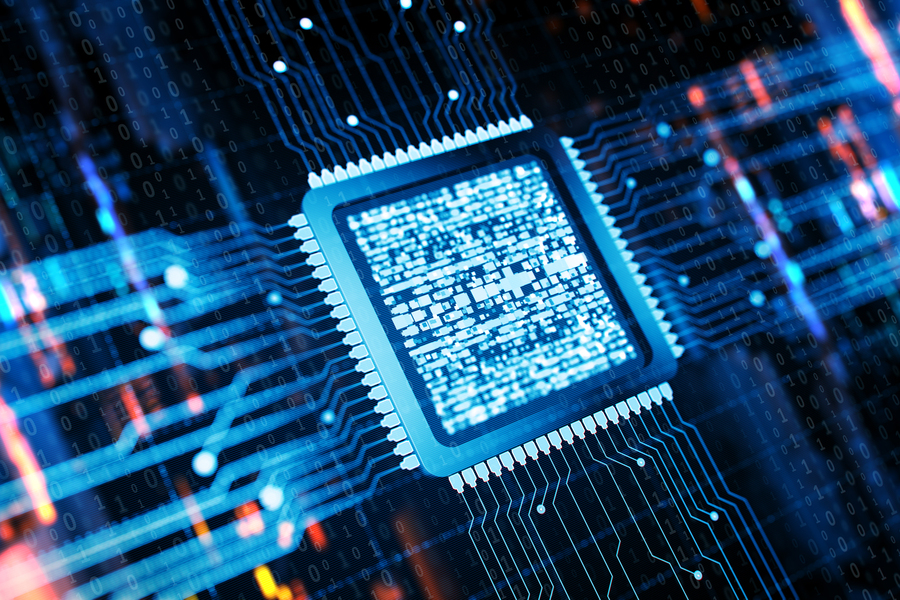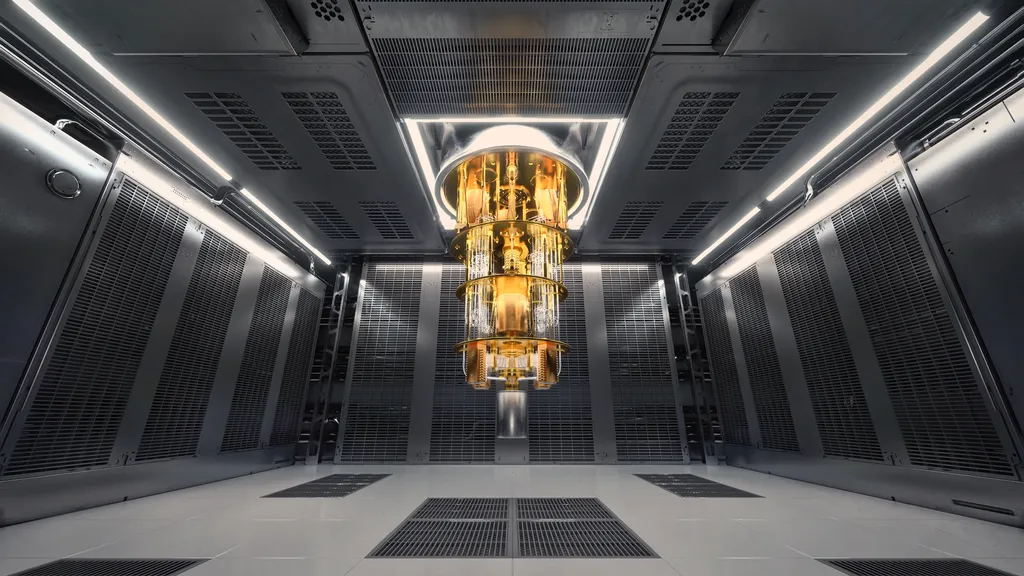Nanocomputing- Transforming Technology's Future
nanocomputing represents a paradigm shift in computing technology. By harnessing the power of nanoscale components, it opens up a world of possibilities for smaller, faster, and more energy-efficient computing systems. The applications of nanocomputing are vast, ranging from medicine and materials science to artificial intelligence and quantum computing. Although challenges exist, ongoing research and advancements in nanotechnology will pave the way for a future where nanocomputing plays a central role in shaping our technological landscape.

In today's fast-paced world, technological advancements continue to shape our lives. One such groundbreaking innovation is nanocomputing, a field that holds immense potential for revolutionizing various industries. Nanocomputing involves the development and utilization of nanoscale devices and components to create faster, smaller, and more efficient computing systems.
What is Nanocomputing?
Nanocomputing refers to the field of computing that focuses on the development and utilization of nanoscale devices and components for information processing and storage. It explores the potential of using nanotechnology to create smaller, faster, and more energy-efficient computing systems.
Traditional computers rely on electronic components made from silicon-based transistors. However, as the demand for higher performance and smaller devices increases, there are limitations to the miniaturization of silicon-based components. Nanocomputing aims to overcome these limitations by leveraging the unique properties of nanomaterials and nanoscale structures.
One of the promising approaches in nanocomputing is the use of nanoscale devices, such as nanowires, carbon nanotubes, or quantum dots, which can function as transistors, logic gates, or memory elements. These nanoscale devices can be integrated into complex circuits to perform computations.
Nanocomputing also explores alternative computing paradigms beyond the traditional binary logic used in classical computers. For example, quantum computing utilizes the principles of quantum mechanics to perform calculations using qubits, which can exist in multiple states simultaneously. Quantum nanocomputing seeks to harness the power of quantum effects at the nanoscale for information processing.
Another area of interest in nanocomputing is neuromorphic computing, which draws inspiration from the structure and function of the human brain. Neuromorphic systems aim to emulate the brain's ability to process and analyze information in a highly parallel and energy-efficient manner. Nanoscale devices capable of mimicking the behavior of neurons and synapses are being explored for the development of neuromorphic computing architectures.
Advantages of Nanocomputing
Nanocomputing offers several advantages over traditional computing approaches. Firstly, nanoscale devices are incredibly small, enabling the creation of highly compact and portable computing systems.
Miniaturization: Nanocomputing allows for the creation of incredibly small computing systems. The nanoscale components enable the development of miniature devices that can be integrated into various applications. This miniaturization offers advantages such as portability and the ability to embed computing power in small spaces.
Increased Processing Power: Nanoscale devices in nanocomputing have the potential to provide significantly higher processing power compared to traditional computing systems. By leveraging the unique properties of nanomaterials, such as quantum effects, nanocomputing can perform complex calculations at accelerated speeds, enabling faster data processing and analysis.
Energy Efficiency: Nanocomputing offers improved energy efficiency compared to conventional computing systems. The nanoscale components consume less power, reducing energy requirements and extending battery life in portable devices. This energy efficiency contributes to sustainable technology development and lowers operational costs.
Enhanced Functionality: Nanoscale components enable the integration of diverse functionalities within a small footprint. Nanocomputing systems can combine computing, sensing, and communication capabilities in a single device, leading to the development of smart and multifunctional technologies. This enhanced functionality opens up new possibilities for applications in fields such as healthcare, robotics, and the Internet of Things (IoT).
Higher Integration Density: Nanocomputing allows for higher integration density, enabling the placement of a larger number of components within a limited space. This increased integration density leads to more complex and powerful computing systems. It also facilitates the development of advanced technologies, such as wearable devices and implantable electronics, where size and form factor are crucial considerations.
Improved Reliability: The nanoscale components used in nanocomputing can exhibit improved reliability due to their small size and enhanced structural stability. This reliability is beneficial for critical applications where system failure or errors can have severe consequences. Nanocomputing systems can offer increased robustness, fault tolerance, and error correction capabilities, resulting in more reliable and resilient technology.
Potential for New Discoveries: Nanocomputing operates at the nanoscale, where quantum effects come into play. These quantum phenomena have the potential to unlock new discoveries and breakthroughs in fields like quantum computing, cryptography, and materials science. Nanocomputing provides a platform for exploring and harnessing these unique properties, opening up avenues for advancements in various scientific disciplines.
Cost Reduction: Although the initial research and development costs associated with nanocomputing may be high, the potential for cost reduction exists in the long run.Nanocomputing's ability to miniaturise and use less energy can reduce the cost of materials, manufacturing procedures, and energy use. As the technology matures and becomes more widespread, economies of scale may further contribute to cost reduction.
Applications of Nanocomputing
The applications of nanocomputing span various fields, revolutionizing industries and transforming the way we interact with technology. One prominent area is medicine, where nanocomputing enables targeted drug delivery systems, precise imaging techniques, and even nanorobots for medical procedures. Nanocomputing also plays a vital role in the development of advanced materials.
Medicine and Healthcare: Nanocomputing has promising applications in medicine and healthcare. It can be utilized for targeted drug delivery, where nanoscale devices can precisely deliver medication to specific areas of the body, increasing effectiveness and minimizing side effects. Nanocomputing also enables advanced imaging techniques with high resolution and sensitivity, aiding in early disease detection. Additionally, nanorobots and nanosensors can be used for minimally invasive surgeries and real-time monitoring of patient health.
Electronics and Consumer Devices: Nanocomputing plays a crucial role in the development of smaller and more efficient electronic devices. Nanoscale components enable the creation of ultra-thin and flexible displays, wearable devices, and smartphones with enhanced functionalities. Nanocomputing also contributes to advancements in battery technology, enabling longer battery life and faster charging for portable devices. Moreover, nanocomputing helps in the development of sensors and actuators used in various consumer products.
Energy and Environment: Nanocomputing has significant implications for energy generation, storage, and conservation. It enables the development of highly efficient solar cells that capture and convert sunlight into electricity. Nanocomputing also plays a role in improving battery technology for energy storage, facilitating the widespread adoption of renewable energy sources. Additionally, nanocomputing can contribute to smart grid systems by optimizing energy distribution and reducing energy waste.
Materials Science and Engineering: Nanocomputing has revolutionized materials science and engineering. It allows for the creation of nanomaterials with unique properties and functionalities. These materials find applications in various industries, such as aerospace, automotive, and construction. For example, nanocomposites offer enhanced strength, durability, and lightweight properties, making them ideal for manufacturing high-performance materials. Nanocomputing also contributes to the development of self-healing materials and improved coatings with advanced properties.
Data Storage and Processing: Nanocomputing offers the potential for increased data storage and processing capabilities. Nanoscale memory devices, such as flash memory and magnetic storage, enable higher storage densities and faster data access. Additionally, nanocomputing contributes to the development of quantum computing, where quantum bits (qubits) harness quantum effects for exponential computational power. Quantum computing has the potential to revolutionize fields like cryptography, optimization, and complex simulations.
Environmental Monitoring and Safety: Nanocomputing can be utilized for environmental monitoring and safety applications. Nanosensors can detect and measure various pollutants and contaminants in air, water, and soil. These sensors provide real-time data and enable early warning systems for environmental hazards. Nanocomputing also plays a role in developing smart cities and infrastructure, where sensors and intelligent systems optimize resource usage, enhance safety, and improve the overall quality of life.
Transportation and Logistics: Nanocomputing has implications for the transportation and logistics industries. It can contribute to the development of smart vehicles with advanced driver-assistance systems, efficient traffic management, and autonomous capabilities. Nanosensors and nanocomputing enable real-time monitoring of vehicle performance, predictive maintenance, and enhanced safety features. Moreover, nanocomputing plays a role in optimizing logistics operations, improving supply chain management, and reducing transportation-related energy consumption.
Nanocomputing Challenges and Limitations
Despite its immense potential, nanocomputing faces several challenges and limitations. One significant hurdle is the fabrication and assembly of nanoscale components with high precision and reliability. The manufacturing processes for nanodevices are complex and expensive, requiring sophisticated tools and techniques. Moreover, the integration of nanocomponents into existing technologies poses compatibility and scalability issues. Additionally, nanocomputing also faces obstacles related to heat dissipation, noise reduction, and maintaining stable quantum states.
Emerging Trends in Nanocomputing
Nanocomputing is an evolving field with continuous advancements and exciting new trends. One such trend is the development of nanomaterials with unique properties, such as graphene and carbon nanotubes, which offer extraordinary conductivity and strength. Another emerging area is the exploration of quantum computing, which leverages quantum properties to perform calculations exponentially faster than classical computers. Furthermore, researchers are working on creating nanocomputers that can self-assemble, repair, and adapt to changing environments.
The Future of Nanocomputing
The future of nanocomputing holds immense promise and potential. As researchers overcome existing challenges and refine nanoscale fabrication techniques, we can expect to witness a proliferation of nanocomputing applications. Nanocomputers are likely to become an integral part of our daily lives, seamlessly integrated into various devices and systems. From personalized medicine to ultra-efficient energy management, nanocomputing will reshape industries, improve efficiency, and unlock new frontiers in technology.
In conclusion, nanocomputing represents a paradigm shift in computing technology. By harnessing the power of nanoscale components, it opens up a world of possibilities for smaller, faster, and more energy-efficient computing systems. The applications of nanocomputing are vast, ranging from medicine and materials science to artificial intelligence and quantum computing. Although challenges exist, ongoing research and advancements in nanotechnology will pave the way for a future where nanocomputing plays a central role in shaping our technological landscape.
FAQs
Q1: How small are nanocomputers?
Nanocomputers are incredibly small, often consisting of components that are just a few nanometers in size.
Q2: Can nanocomputing replace traditional computing systems?
While nanocomputing offers significant advantages, it is unlikely to completely replace traditional computing systems. Instead, it will complement and enhance existing technologies.
Q3: What are some potential risks associated with nanocomputing?
As with any emerging technology, nanocomputing presents potential risks, including issues related to privacy, security, and the ethical use of nanorobots in medicine.
Q4: How long will it take for nanocomputing to become mainstream?
The widespread adoption of nanocomputing will depend on various factors, including the pace of technological advancements, cost-effectiveness, and regulatory considerations. It is difficult to provide an exact timeframe.
Q5: Where can I learn more about nanocomputing?
To delve deeper into the world of nanocomputing, you can explore research papers, academic journals, and conferences focused on nanotechnology and computer science.
What's Your Reaction?
















